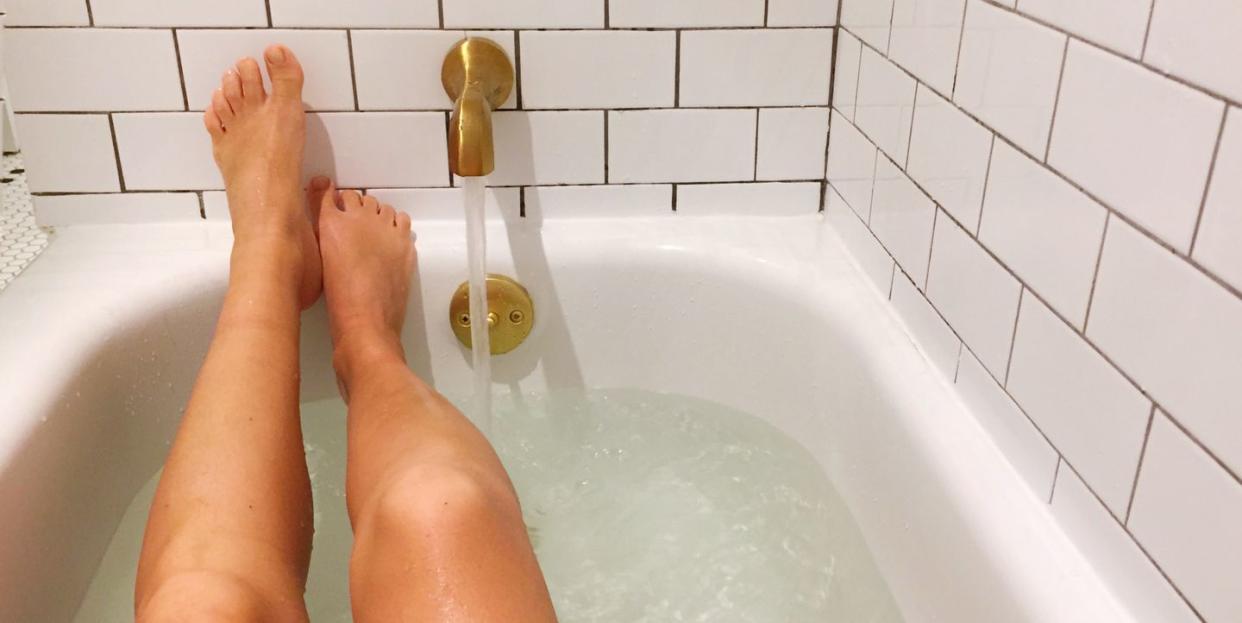Are There Really Any Benefits to Taking Epsom Salt Baths?

There are three basic components of a successful training plan: fueling, riding (duh), and recovering. But from there, the details get fuzzy: I mean, what’s the ideal food to eat before and during a race? How do you best balance your sprints, climbs, and long rides? And how can you optimize your recovery?
Well, when it comes to recovering properly, some recovery experts swear by the benefits of Epsom salt baths, which are believed to reduce muscle soreness, inflammation, and swelling. But are there really any benefits to Epsom salt baths, or are they just another locker room myth?
Why People Suggest Epsom Salt Baths
To understand the thinking behind the benefits of Epsom salt, you need to know that Epsom salt is made of magnesium and sulfate. “Magnesium is known to increase relaxation, reduce inflammation, and aid in muscle and nerve function,” says Corinne Croce, D.P.T., co-founder of Body Evolved, a boutique physical therapy studio in New York City. “And the sulfate in Epsom salt is said to help with recovery and detoxification.”
Greg Grosicki, Ph.D., an assistant professor and director of the exercise physiology laboratory at Georgia Southern University, adds that magnesium deficiency is associated with muscle aches and cramps. “By taking an Epsom salt bath, or by exposing the skin to Epsom salts in a cream, we hope to increase our magnesium levels and reduce muscle soreness.”
The Limitations of the Research
But the key word there is hope. Even though magnesium sulfate has been used intravenously to treat muscle spasms and tetanus (a disease that causes muscle contractions), the million dollar question for cyclists is: Can the active ingredients in Epsom salt penetrate your skin and aid in muscle recovery?
The answer, unfortunately, is a solid: ehhhhhh. One Magnesium Research study shows that hair follicles may help magnesium penetrate the skin, and a small PloS One study found a slight increase in magnesium levels when people applied a cream with the element. But when researchers evaluated relevant studies on the topic for a Nutrients review, they still concluded that the evidence just isn’t there yet.
“Scientific support for transdermal (a.k.a. skin) exposure as a means to increase magnesium levels is scarce,” Grosicki says.
[Want to fly up hills? Climb! gives you the workouts and mental strategies to conquer your nearest peak.]
The Benefits of Epsom Salt Baths
That said, the potential benefits-and low-risk nature of the therapy-may make Epsom salt baths worth a try. For starters, soaking your feet in an Epsom salt bath might help soothe blisters.
“Magnesium helps reduce inflammation in the endothelial layer of the skin,” says Dendy Engelman, M.D., director of dermatologic surgery at Metropolitan Hospital in New York City, which can help blisters heal.
Most importantly, anything that helps you unwind can be considered a recovery win. “Lack of evidence aside, if a bath (with or without Epsom salt) helps you to relax after a hard workout, that in and of itself may help to expedite recovery because cortisol promotes muscle breakdown,” Grosicki says.
And since Epsom salts don’t dissolve in cold water (water should be around 130 degrees Fahrenheit), you’re forced to forgo that miserable ice bath in favor of something warmer-and more relaxing.
The 4 Best Buys for Your Bath
('You Might Also Like',)

